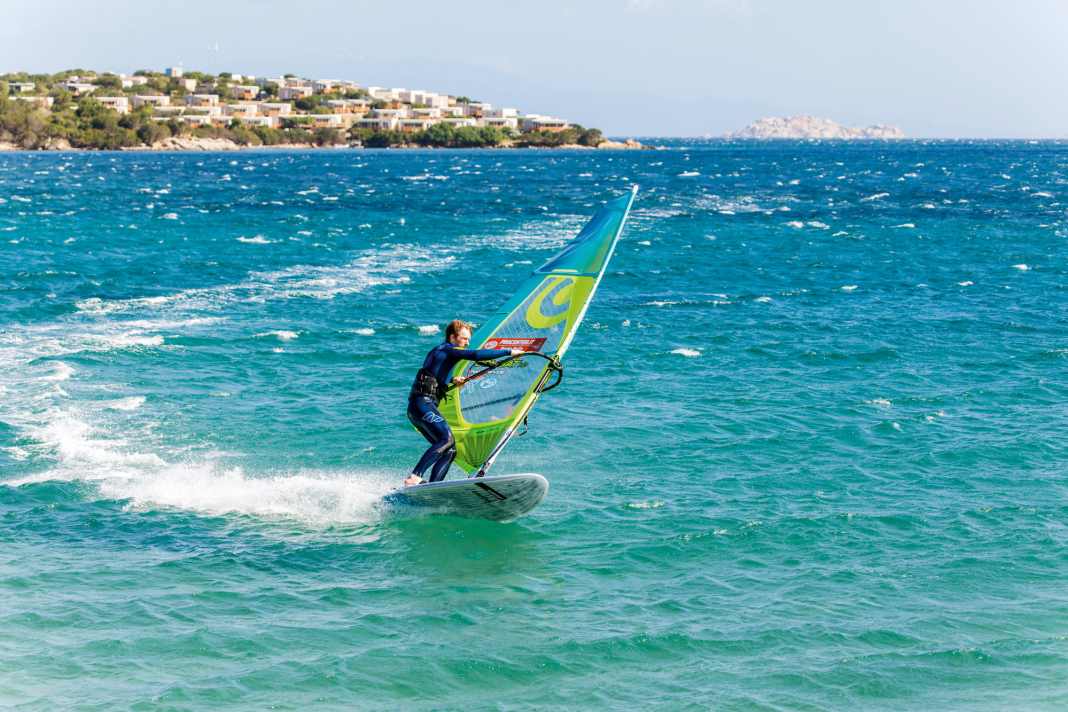





- Ideal conditions: 4-6 Beaufort, smooth water
- Ideal material: Large freeride or all-round boards, camberless sails
- Learning requirements: Base neck & Sail steering, Glide, foot control
In this article:
It is said that almost half of all windsurfers worldwide practise the power jibe - hardly any other manoeuvre fascinates and frustrates as much as this change of direction while planing. Two things are crucial for the manoeuvre to work: the right equipment - i.e. a board with sufficient volume and a light sail - and, of course, good technique.
In contrast to the "normal" jibe, the power jibe is initiated while planing and therefore with foot control. Nevertheless, there are many similarities between the two jibes, for example in the way the sail is shifted at the end. For this reason, you can lay the foundations for successful planing jibes in light winds.
The most important components of the power neck
Module 1: Speeeeed!
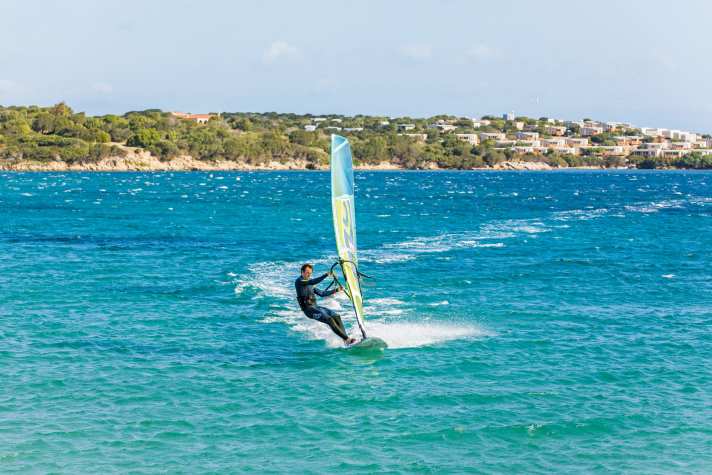
Whether it's a power jibe, duck jibe or carving jibe - if you start with little speed, you shouldn't be surprised if you park in the middle of it. And because the downwind course, i.e. the course diagonally away from the wind, is the fastest course when surfing, picking up speed on this course is part of the preparation phase. Check the free space downwind beforehand and fall off by applying light pressure to the leeward edge. Now you will notice how the board accelerates. Only now do you start the actual jibe by pulling your back foot out of the strap and unhooking from the harness. Keep the sail tight and the board flat on the water during this phase so as not to lose any speed.
Module 2: Sail control outhaul ahead
If you've ever taken a power jibe course, you may have wondered why the surf instructor sent you out on the water in two gusts of wind. He was right, because sail control is the basis for any form of board control. Because many planing jibes include an outhaul phase at the end, mastering this technique is a basic requirement. Light winds, a large board and a small, light sail are ideal for practising.
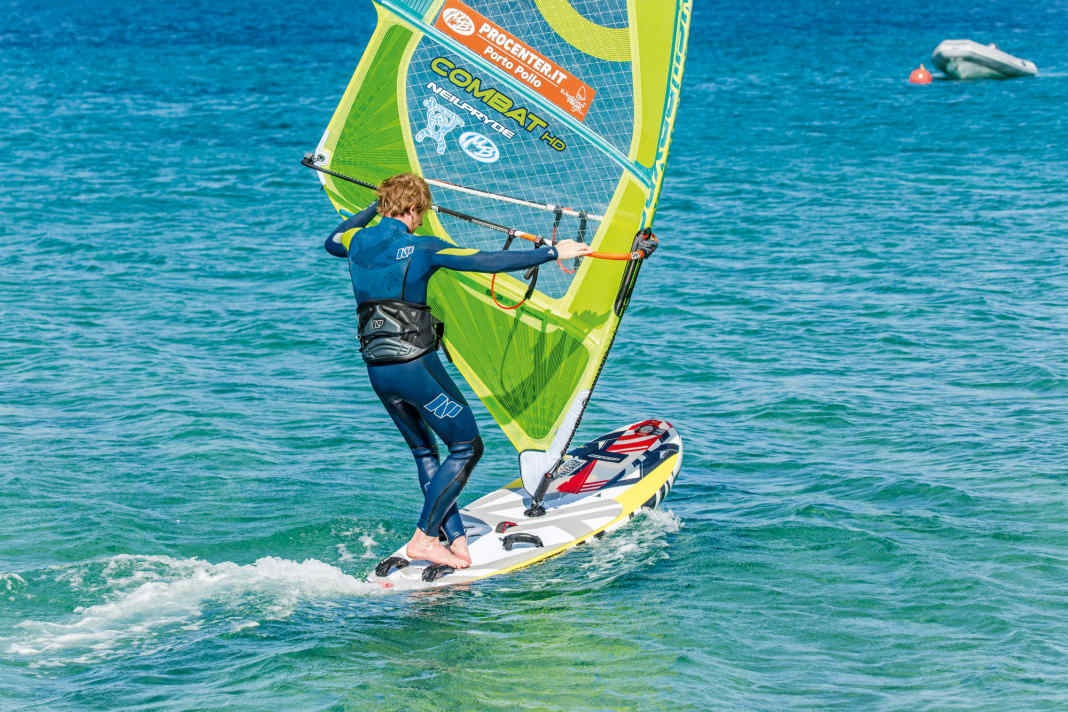



At the top of the gallery, we show you a very good preliminary exercise: ride a basic jibe and change the foot position to downwind as usual. Continue to steer in the new direction without outhauling by tilting the mast towards the water - you are now sailing outhaul ahead. As usual, you can control the sail draft by sheeting in and sheeting out; this is now done by the front hand. Steering movements (luffing and dropping) on the sail plane are also possible. By consciously extending the outhaul ahead of the outhaul, you train your sailing feel immensely - this will benefit you with every power gybe!
Module 3: Foot and body control
In connection with jibing, people always talk about "foot control" - which is actually wrong, because in principle you control with your whole body. You can also practise this type of control in isolation.
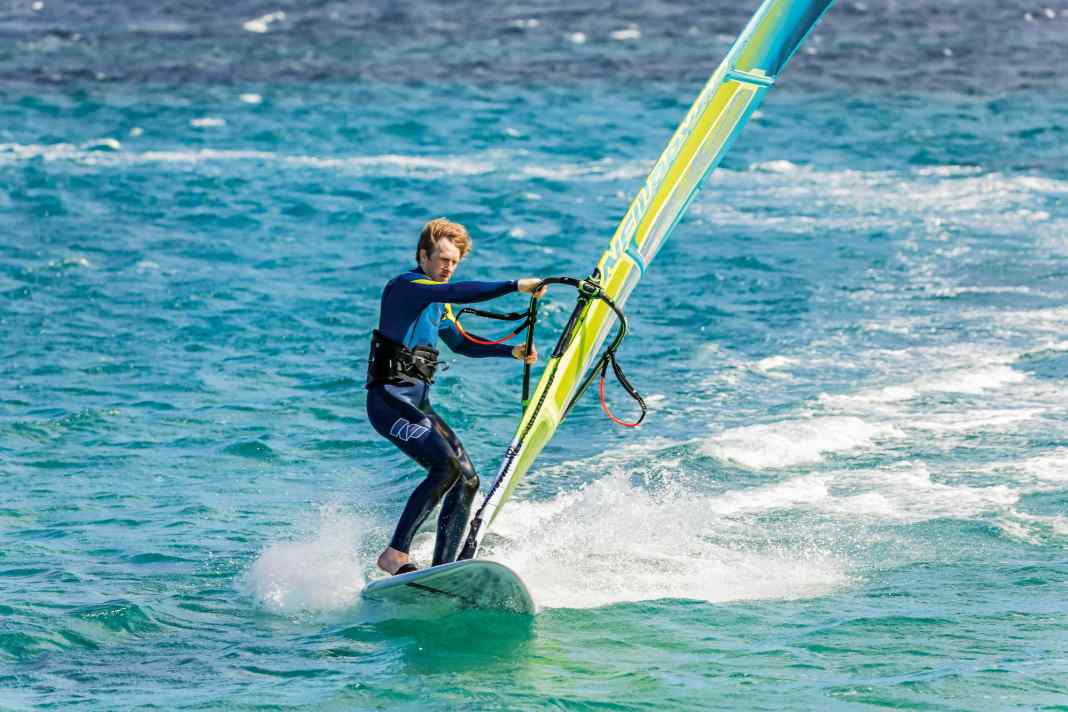




Initiate a leeward turn by moving your back foot out of the straps towards the leeward edge. Now let the sail pull you into the turn by stretching the mast arm and holding the sail tight with your back hand - you will now feel your upper body being pulled inwards and forwards into the turn. This body shift in combination with pushing your knees forwards ("knee push") ensures that you can exert pressure on your toes via the balls of your feet and the board drops. To carve upwind, move your back foot slightly towards the windward edge. You can exert pressure via the heels by opening the sail slightly and stretching your legs more. This causes the body to move outwards again and the board turns to windward.
The most common mistakes with the power jibe
Power jibe error 1: Loss of speed and control
Does your board often bounce when you jibe? Does the planing usually end on downwind? Then this is because you are not actively letting the sail pull you forwards into the turn.
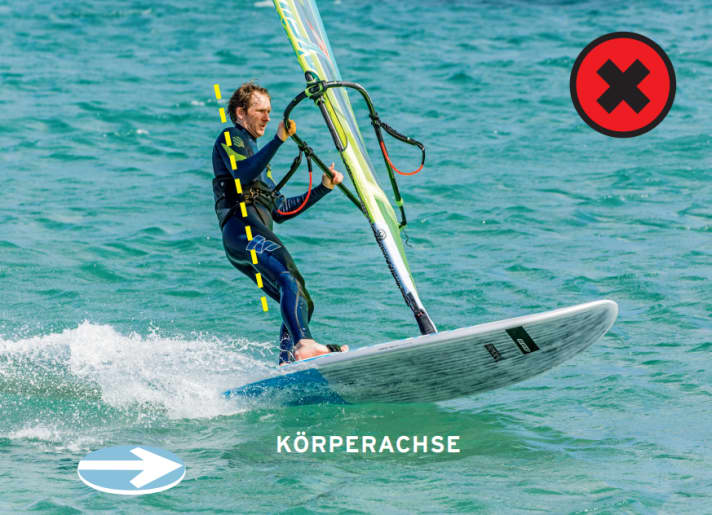
If the mast arm is pulled up when initiating the turn and the sail is opened with the back hand, the body falls backwards. The result: stern load, loss of speed and a board that is unsteady on the edge. If, on the other hand, you extend your front arm when initiating the jibe and keep your back hand fully closed, your sail will develop much more pull, which will pull your upper body forwards and inwards into the turn.
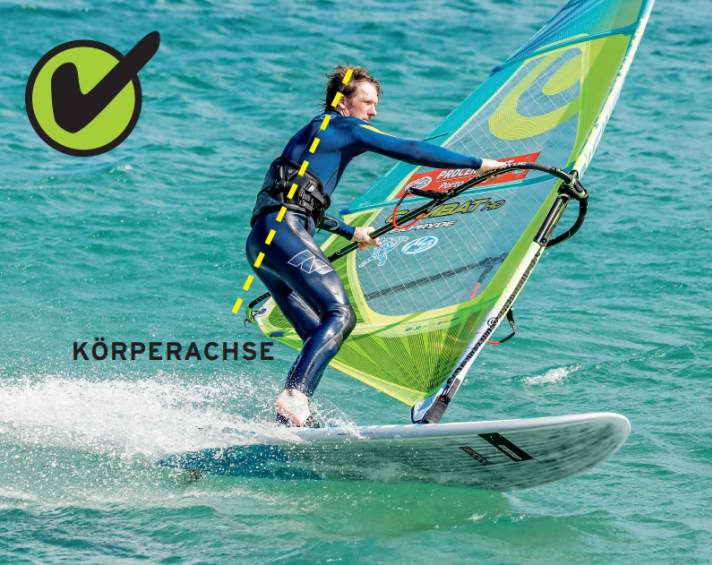
This template allows the board to run flat and as if on rails in the water, which means you can also carry your speed better through the turn! Footwork is also important: if you stand stiff as a robot on deck, you won't be able to exert pressure on the leeward edge. Pushing your knees forward ("knee push") and lowering your upper body will also noticeably calm your turn.
Power jibe error 2: Shifting too early
The mistakes described above when initiating the jibe or simply too little wind can be the reason why you can't get through the jibe. Regardless of the cause, many jibing students then try to jibe the sail downwind, i.e. directly by shifting their feet - even though the board has only turned 90 degrees (1-2).
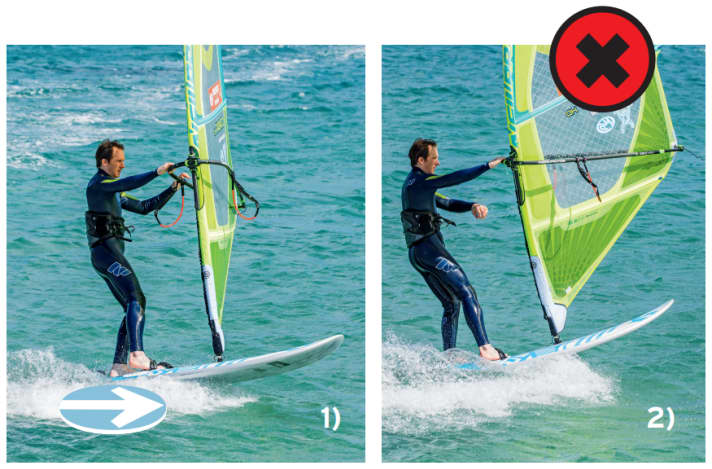
Particularly on small boards, the shifts at this premature point become wobbly, often causing the tail to sink and you end up in the water (3-4).
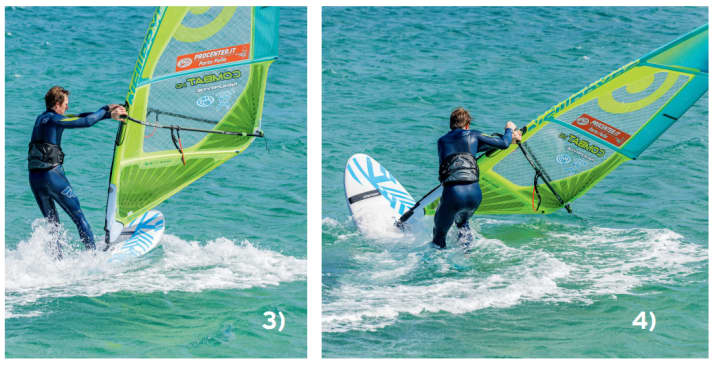
Tip: If your board falls out of planing on a downwind course, finish the power jibe like a basic jibe, i.e. with sail control. After the foot change, tilt the mast outwards towards the water and let your board continue to turn in the new direction. Only after you have completed the entire 180-degree turn do you shift.
Power jibe error 3: leeward fall when shifting
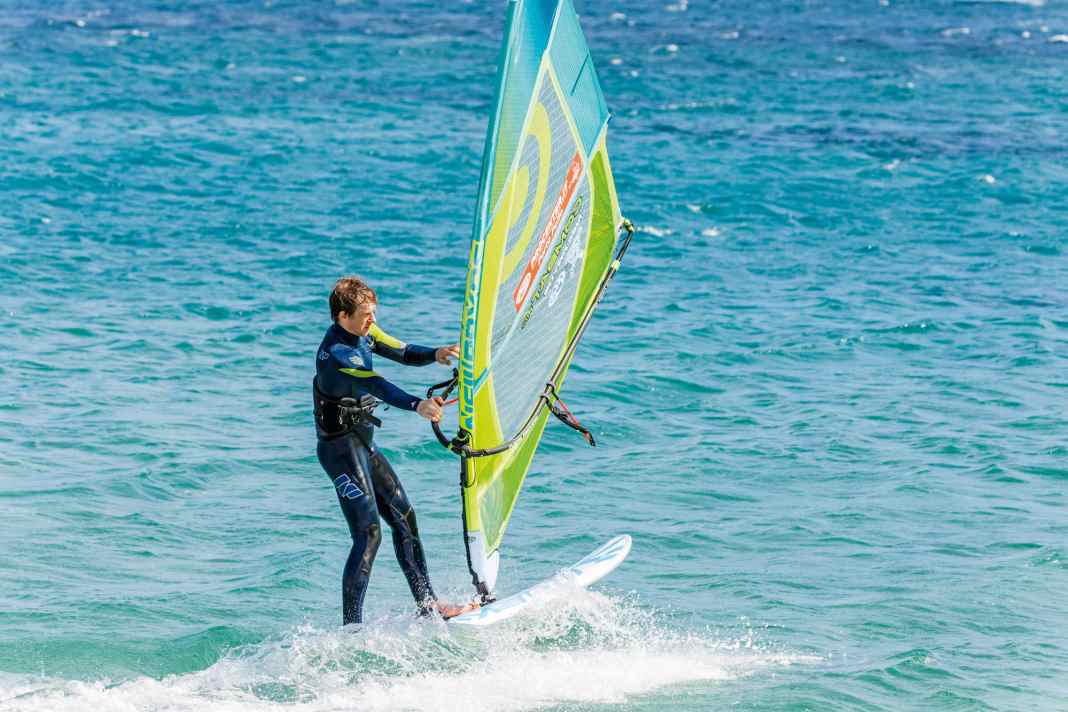





Shifting is the last hurdle of a successful power jibe - if you have practice on the longboard, you have a clear advantage. A classic case is that the sail falls into the water on the leeward side when being shifted (see pictures above). To avoid this, your aim should be to position the sail in a light and neutral position for shifting. The more upright/upright it is when rotating, the easier it will be for you. Therefore, after releasing the back hand, try to pull the sail close to your body with the front hand (mast arm bent!). This will also make it easier for you to reach the new boom side when changing the handle. The old front hand then becomes the new back hand.
The video tutorial for the power jibe
In this clip, we show you what is important when practising, which preliminary exercises you should do and which classic mistakes are best left out.
Have fun with it and of course practising on the water!

